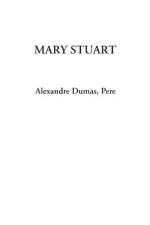“Farewell, delightful
land of France,
My motherland,
The best beloved!
Foster-nurse of my young
years!
Farewell, France, and
farewell my happy days!
The ship that separates
our loves
Has borne away but half
of me;
One part is left thee
and is throe,
And I confide it to
thy tenderness,
That thou may’st
hold in mind the other part."’
[Translator’s note.-It has not been found possible to make a rhymed version of these lines without sacrificing the simplicity which is their chief charm.]
This part of herself that Mary left in France was the body of the young king, who had taken with him all poor Mary’s happiness into his tomb.
Mary had but one hope remaining, that the sight of the English fleet would compel her little squadron to turn back; but she had to fulfil her destiny. This same day, a fog, a very unusual occurrence in summer-time, extended all over the Channel, and caused her to escape the fleet; for it was such a dense fog that one could not see from stern to mast. It lasted the whole of Sunday, the day after the departure, and did not lift till the following day, Monday, at eight o’clock in the morning. The little flotilla, which all this time had been sailing haphazard, had got among so many reefs that if the fog had lasted some minutes longer the galley would certainly have grounded on some rock, and would have perished like the vessel that had been seen engulfed on leaving port. But, thanks to the fog’s clearing, the pilot recognised the Scottish coast, and, steering his four boats with great skill through all the dangers, on the 20th August he put in at Leith, where no preparation had been made for the queen’s reception. Nevertheless, scarcely had she arrived there than the chief persons of the town met together and came to felicitate her. Meanwhile, they hastily collected some wretched nags, with harness all falling in pieces, to conduct the queen to Edinburgh.
At sight of this, Mary could not help weeping again; for she thought of the splendid palfreys and hackneys of her French knights and ladies, and at this first view Scotland appeared to-her in all its poverty. Next day it was to appear to her in all its wildness.
After having passed one night at Holyrood Palace, “during which,” says Brantome, “five to six hundred rascals from the town, instead of letting her sleep, came to give her a wild morning greeting on wretched fiddles and little rebecks,” she expressed a wish to hear mass. Unfortunately, the people of Edinburgh belonged almost entirely to the Reformed religion; so that, furious at the queen’s giving such a proof of papistry at her first appearance, they entered the church by force, armed with knives, sticks and stones, with the intention of putting to death the poor priest, her chaplain. He left the altar, and took refuge near the queen, while Mary’s brother, the Prior of St. Andrews, who was more inclined from this time forward to be a soldier than an ecclesiastic, seized a sword, and, placing himself between the people and the queen, declared that he would kill with his own hand the first man who should take another step. This firmness, combined with the queen’s imposing and dignified air, checked the zeal of the Reformers.




